One of my favourite questions received through our Ask a librarian service is from Marion in Queensland, who wrote in about her great-grandfather Thomas, a farmer and labourer from Amphitheatre, Victoria:
I have copies of old photos of men felling a tree and preparing a platform on top of the stump. On the reverse of the photos is a note – “building the grandstand for the Governor’s visit to the Otways.”
I assume that the grandstand was for horse-racing. We would like to know who the Governor was (possibly Hopetoun?), the location of the racetrack, and the date, if possible.
Marion attached these photos showing the tree/grandstand at various stages of construction – Thomas is the bearded figure between the horses in the image, below:
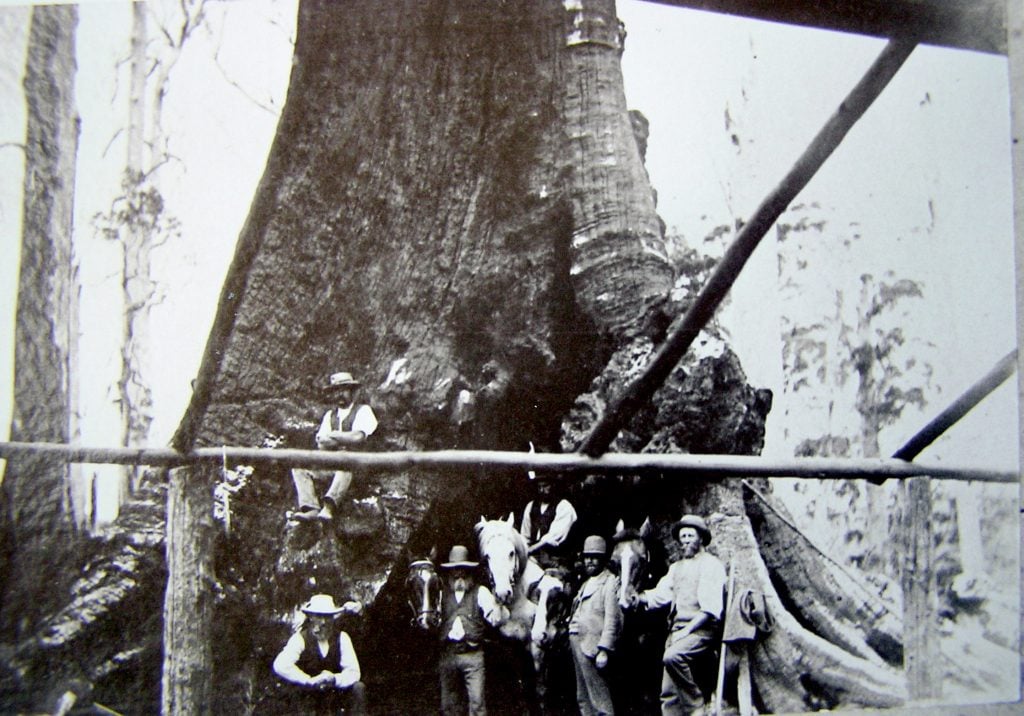
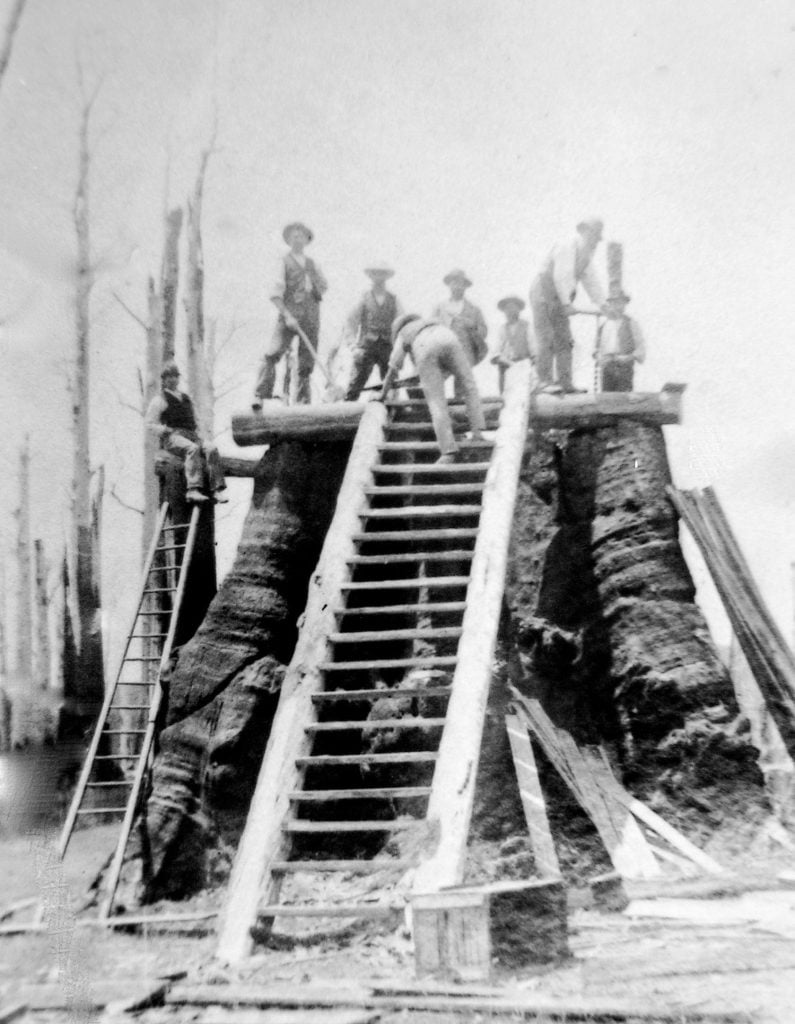
A grandstand made out of a tree stump? A racecourse in the middle of a forest? This is the type of query that makes me love being a reference librarian.
Curious to see if we held any images of this in our collection, I searched the Library catalogue. While I couldn’t find images of this grandstand, I did find other examples of once grand trees that people had repurposed in innovative ways.
A kitchen in a tree Beech Forest; H96.200/1599
Giant butt in the Beech Forest; IAN01/02/96/5
Mammoth tree at Foster, Gippsland; H96.160/1276
Turning to the wonderful digitised newspapers on the National Library of Australia’s Trove database, a search for the keywords: tree stump grandstand, readily turned up several references to Beech Forest – a village in the densely forested Otway Ranges of western Victoria, at an estate called Ditchley Park.
Ditchley Park was home to the earliest European settler to the area, John William Gardner (1861 – 1923). The Colac Herald reported in 1888 that within three years Gardner – a man of ‘indomitable pluck and energy’ – had made ‘wilderness to blossom as the rose,’ by clearing and sowing many acres of land, as well as erecting the ‘large and commodious’ Ditchley House, which served as a hotel, store and butcher shop.
Gardner’s Ditchley Park Hotel, circa 1891; H456
Beech Forest, circa 1902; H96.200/1598
This undertaking – complicated by access difficulties due to the density of the forest – was one that many other selectors had contemplated and then abandoned. But Gardner was obviously not a man easily discouraged, for he even carved out his own race course in the middle of the forest – the Ditchley Park Racecourse.
The Beech Forest Turf Club held their inaugural meeting at Ditchley Park in April 1893, and the event was pronounced a resounding success.
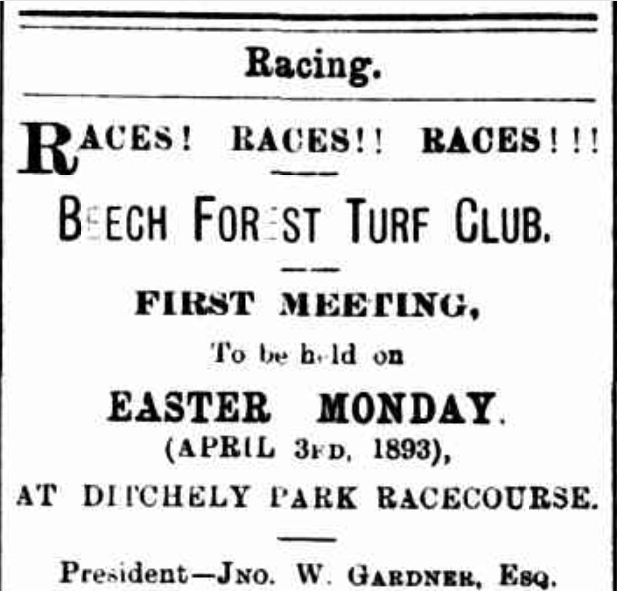
The Colac Herald, 31 January 1893, p. 3
A back country race meeting; A/S25/02/82/52
On the 1st of February 1895, the Colac Herald reported that the Earl of Hopetoun had attended the turf club’s annual meeting as part of a tour of the area.
John Hope (1860-1908), the seventh Earl of Hopetoun, was Governor of Victoria from 1889 to 1895 and the first Governor-General of Australia (1901-1902). The Earl was popular with the public, had a rather extravagant but charming personality, and was known for his love of hunting and horses. He was described as a fearless rider: ‘[p]robably he had more of his bones broken in the hunting-field than any man of his time in England.’ [1]
First Governor-General of Australia, Lord Hopetoun; H26497
Triumphal arches, ‘artistically worked with ferns and native heath, and flowers,’ were erected at various points on the way to the racecourse in honour of the governor’s visit. Upon arrival, ‘the vice regal party took their seats on the grandstand (that now historic stump).’ (The Colac Herald)
The Earl was also treated to a champagne luncheon on the stump where he praised the quality of the track – ‘[n]o horse need be afraid to turn over it’ – and was presented with a handsome blackwood stick, bearing the inscription: ‘The Earl of Hopetoun – memento from forest residents, January 31, 1895.’ (The Colac Herald)
In was later reported that Hopetoun officially opened the finished grandstand during his visit and danced the first set on it with Gardner’s wife Annie, so it seems that the grandstand was built some time after the inauguration of the Beech Forest Turf Club (1893), in anticipation of the Earl’s visit in January 1895. (Gippsland Times)
The grandstand was to become an oft-noted feature of the annual turf club meets and continued to serve as a dance floor (The Colac Herald). It was described as being some 20 feet high, with a railing around the edges and a roof made from fern fronds (Gippsland Times).
As luck would have it I came across this amazing image online – held by Otway Districts Historical Society – of the grandstand in use.
Sadly, in 1906 the infamous grandstand was destroyed in a bush fire. A couple of years later, John Gardner took advantage of rising land values – subdividing his land and selling it – and the colourful history of the Beech Forest Turf Club came to an end. [2]

The grandstand tree stump circa 1880s. Courtesy of Otway Districts Historical Society
References
[1] Cunneen, Chris, Hopetoun, seventh Earl of (1860–1908), Australian Dictionary of Biography
[2] Houghton, Norm, 1984, Beech Forest: a century on the ridge, Beech Forest Centenary Committee, Beech Forest, Vic, p 39

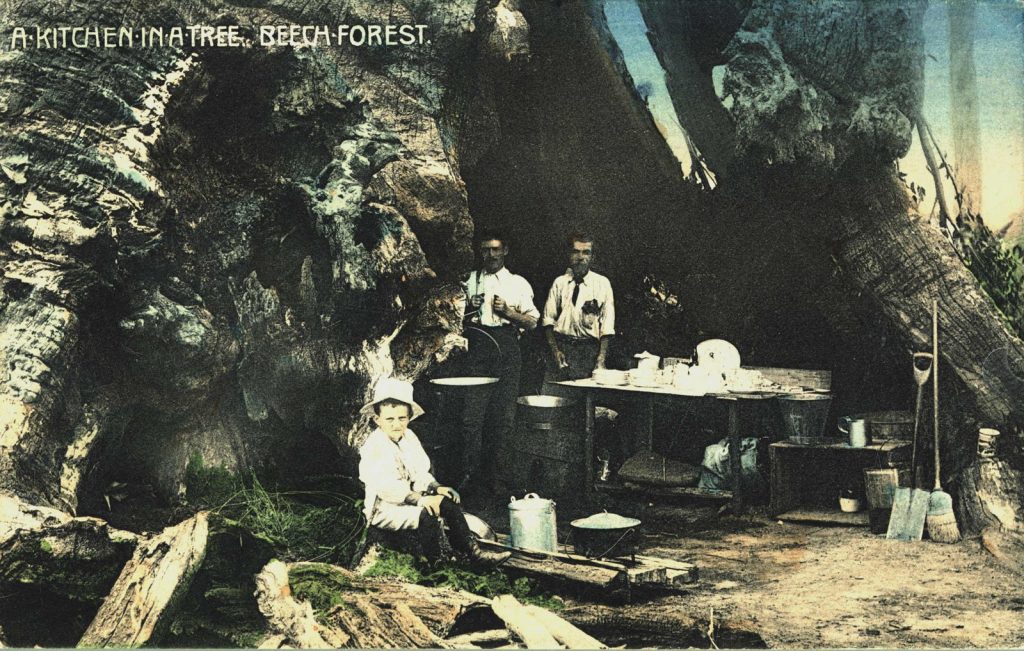
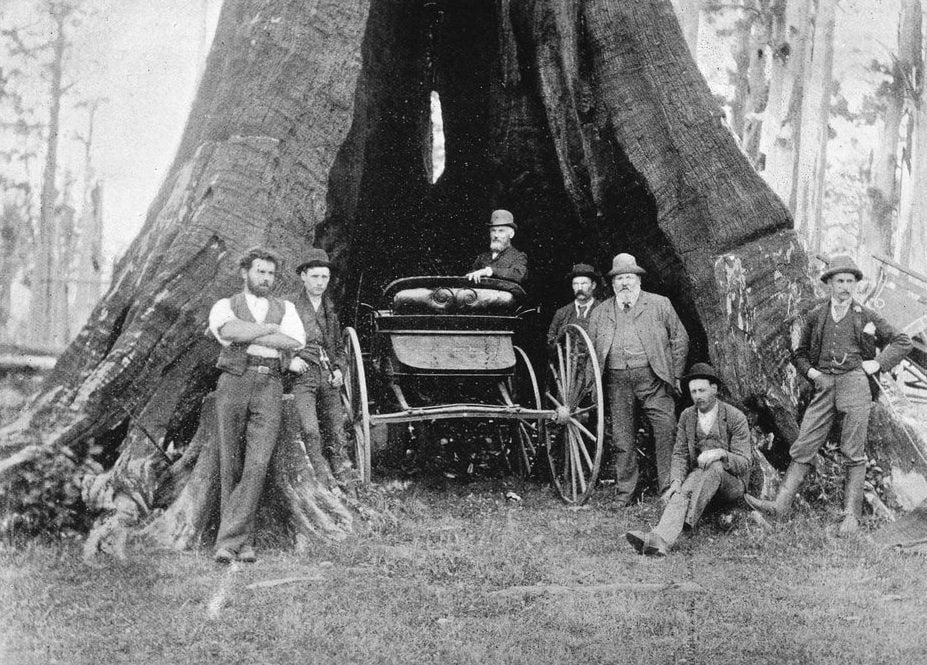

![DITCHLEY PARK HOTEL (HALF-WAY HOUSE BETWEEN COLAC AND APOLLO BAY) [picture]](https://blogs.slv.vic.gov.au/wp-content/uploads/2020/04/DITCHLEY-PARK-HOTEL-HALF-WAY-HOUSE-BETWEEN-COLAC-AND-APOLLO-BAY-picture-1024x609.png)
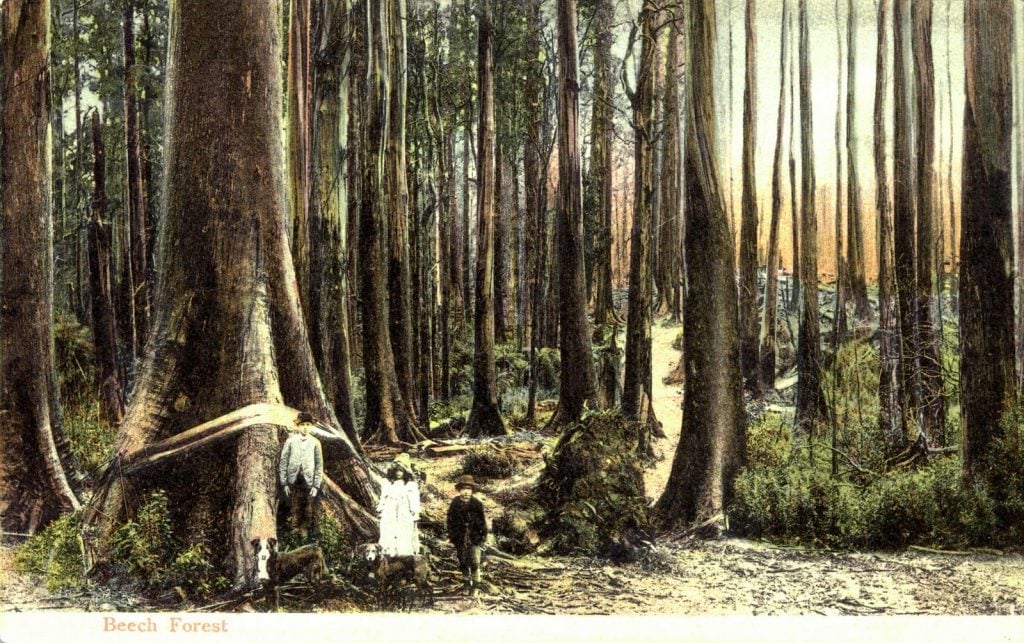



But where in Beechy Forest was the racecourse?
Hi Andrew,
Good question! The Public Records Office Victoria hold a map of Beech Forest – which they have digitised – which shows where the race course was located. Note the quarry nearby – you can see the present location on GoogleMaps.
Also see this advertisement for the subdivision of the Ditchley Park estate in 1908, courtesy of the Otway Districts Historical Society, with the accompanying information:
“Commercial realities and bushfires caused the Beech Forest community to re-establish itself around the railway station, away from Gardner Hill. This caused John W. Gardner to subdivide his land on the north side of the railway station. One subdivision was created near the Ditchley railway station on the old racecourse site, and another of 25 allotments forming what became Southorn Street.”
Cheers,
Kylie
I used to holiday in Beech Forest quite a bit, a very lovely cool spot. The remnants of the giant forest are everywhere but I believe the huge stump (once used as a stable) has rotted out.
The railway line is now a walking track: my father in law lived around there as a boy and the log trains would slow down as they passed his farm so that he could leap onto the trucks for a lift to school if he missed the bus.
I make reference, with a photo, in a book (pages 52,53) I have written titled “The Redwoods of the Otway Ranges” ( ISBN 978-1-921737-13-8).
Both yourself and Marion may find this book of interest.
Thank you Roger!
Looking forward to having a look at the Library’s copy when I can.
The Redwoods of the Otway Ranges / Roger Smith.
Link to this record
http://search.slv.vic.gov.au/permalink/f/1cl35st/SLV_VOYAGER3247189
Kylie
Smith’s book is excellent and beautifully written. He portrays a deep understanding of the Otways, Beech Forest and of course the Redwoods of the Aire Valley. I am keen to find a copy of Rain Falling on Redwoods.
Great photos and story but the tree in question is a messmate. there are still the remains of giant messmates like those in Melba Gully.